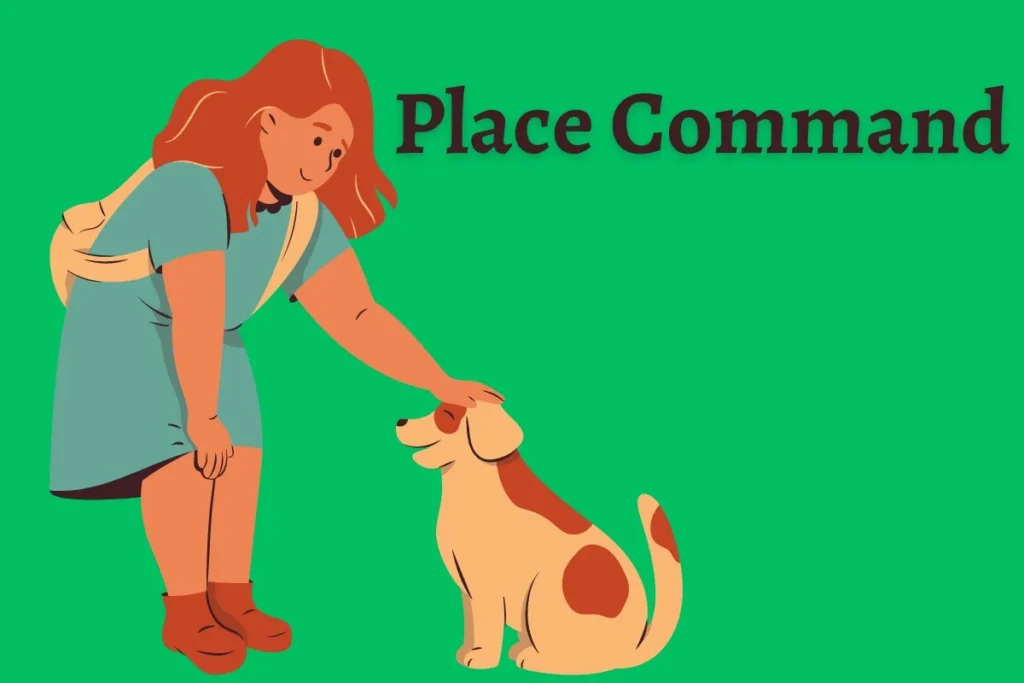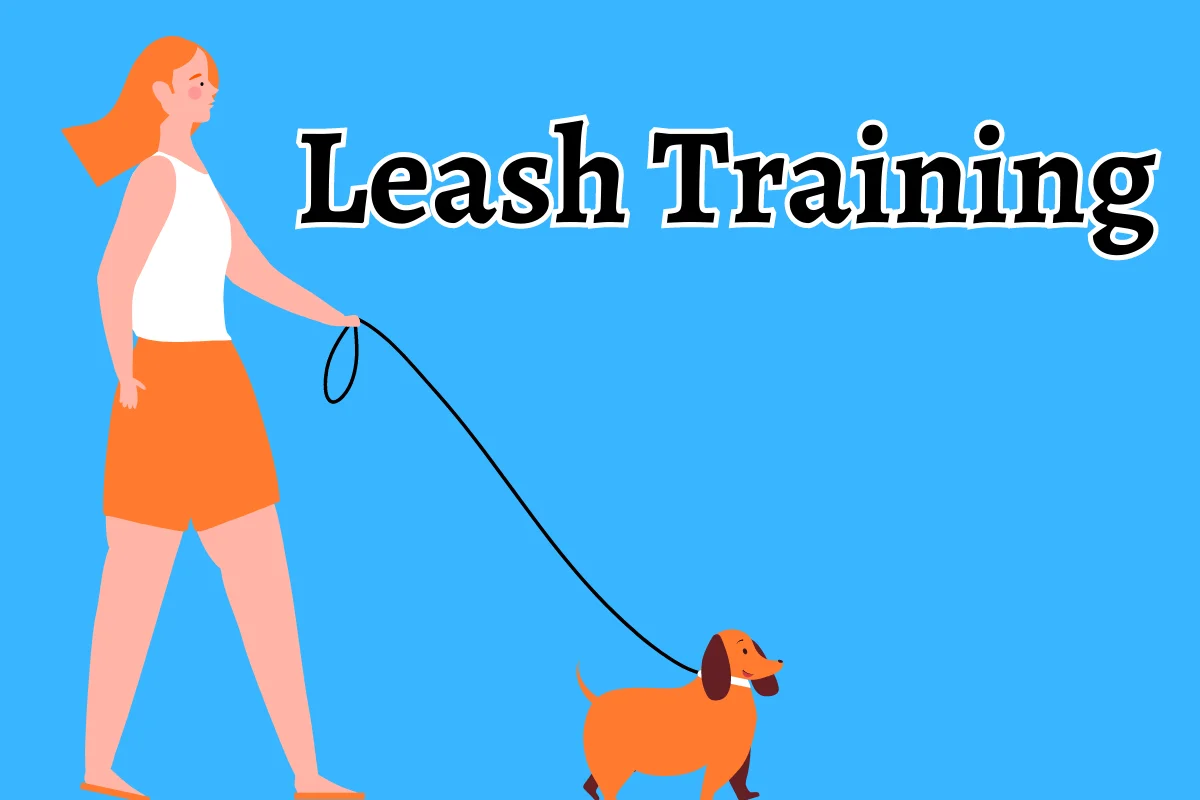Teaching the place command for dogs is an extremely useful obedience skill for a calm, well-behaved canine companion.
This command directs your dog to go to a specific spot and remain settled there until released. With positive, structured training, most dogs can learn this in 30 minutes or less.
Mastering the place command for dogs provides many benefits:
- Prevents jumping up or bothering guests
- Keeps them out of the way during cooking, cleaning, or when you have work to do
- Provides a natural timeout space when overexcited
- Helps build listening skills and obedience
- Gives them a safe place to rest and observe
- Aids in crate and potty training
This article will teach you step-by-step how to train a solid place command for dogs in just 30 minutes.
With the right approach, you’ll gain an essential tool for a better behaved dog.
Let’s get started!

How to Train Place in 4 Simple Steps
The key to effectively training “place” is breaking it down into small, manageable steps and rewarding progress. Here is a simple 4 step process to teach place command for dogs:
Step 1: Pick the Place Spot
First, designate the physical spot you want your dog to go to when commanded. This can be a mat, dog bed, or crate lined with a blanket or towel. Any soft, defined area works.
Keep the following in mind when picking the perfect place:
- Select an out-of-the-way spot that won’t be in high traffic areas. This prevents frustration and allows your dog to relax.
- Make sure it’s a spot your dog already likes and associates with rest and comfort. Their crate or bed is ideal.
- The spot should be easily accessible at all times and reserved solely for place training.
- Bigger dogs need a larger place spot. Make sure your dog can comfortably lie down on it.
Step 2: Lure Your Dog Into Position
With treats in hand, lead and lure your dog onto the designated spot using a treat. As soon as they step onto the spot with all four paws, say “place” in an upbeat, encouraging tone and give them the treat.
Repeat this several times until your dog is consistently going to the spot when you lure them. Mix up your starting position so they learn to go to place from various angles.
Pro Tip: Use high-value, smelly treats like small pieces of chicken or cheese to really motivate your dog during this introduction phase.
Step 3: Add the Cue
Once your dog understands going to the spot earns a reward, you can introduce the verbal “place” cue and hand signal.
With your dog off the spot, say “place” and use a hand signal like pointing or patting the spot simultaneously. When they go to the spot, reward with praise and a treat.
Repeat this often over multiple short sessions until your dog reliably goes to the spot when you give the verbal and visual cue without needing a lure treat.
Step 4: Increase Duration
Now that your dog understands the “place” cue, you can start building up duration.
Say “place” and send them to the spot as usual. But this time, wait a few seconds before rewarding. Slowly increase the time between the cue and the reward, working up to several minutes.
If your dog gets up, simply say “oops” and lead them back to the spot to try again. Keep sessions short and upbeat. Gradually ask for longer stays before treating and praising.
Training Tips for Fast Place Results
Follow these tips to get the best results when training your dog’s “place” command:
- Use positive reinforcement: Reward calm behavior on the spot with treats, pets, and praise. Never scold for mistakes.
- Practice daily: Frequent, short sessions are most effective for dogs to learn quickly.
- Start small: Gradually build up the duration your dog must stay on place before getting a reward.
- Be patient: Some dogs take to this command more naturally than others. Stay consistent and upbeat.
- Mix up training locations: Help generalize the cue by practicing in various rooms and with distractions present.
- Use a release cue: Say “all done” or “break” to indicate when your dog can leave the spot so they don’t break stays.
- Avoid repetition: Keep sessions fun with varied rewards and training scenarios. Dogs get bored with too much repetition.
With this simple step-by-step process, you can have your dog happily going to their place spot and settling in just 30 minutes of training time. In a few short sessions, you’ll have a well-behaved dog and a new way to promote relaxation and control behaviors.
Place provides essential structure while also giving your dog a comfortable safe zone in your home.
Troubleshooting Common Place Command Issues
If you’re struggling with place command training, here are some common issues and how to fix them:
Problem: My dog won’t go to the spot or get on it.
Solution: Make sure you have a reward ready to lure them onto the spot at first. Also be sure you are rewarding them the instant they step on. Use extra tempting treats if needed.
Problem: My dog won’t stay on the spot for more than a few seconds.
Solution: You likely increased duration too quickly. Return to rewarding just 1-2 second stays, then slowly build up time again in small increments.
Problem: My dog goes to the spot but is restless and keeps popping up.
Solution: Only reward calm settled behavior on the spot. If they pop up, reset by directing back to the spot again. Practice in short sessions to keep them engaged.
Problem: My dog performs well at home but won’t “place” in other locations.
Solution: Practice cue in multiple rooms at home first. Then start training in low distraction public locations to generalize the skill. Always reward success!
Achieve Obedience with More Advanced Training
A solid “place” command is the foundation for many other important obedience skills. Once mastered, take your training to the next level with these advanced commands:
- Sit and stay – Holds a sit position for extended durations
- Loose leash walking – Walks politely on a loose leash without pulling
- Settle – Learns to self-calm on cue when overexcited
- Crate training – Comfortably and calmly spends time in a crate
A well-trained dog is a joy to own. With patience and positive methods, you can achieve a happy, obedient companion. Place command is the first step!
Conclusion
In as little as 30 minutes a day, you can teach your dog to reliably go to a designated spot and settle there calmly on cue.
The place command for dogs provides important impulse control, structure, and behavior redirection. With clear communication and rewards for success, most dogs can quickly master it.
Make sure to break the skill down into small, achievable steps. Keep training sessions frequent but short to maintain engagement. Use high-value treats, and practice in various locations.
Stay positive – your dog wants to please you.



